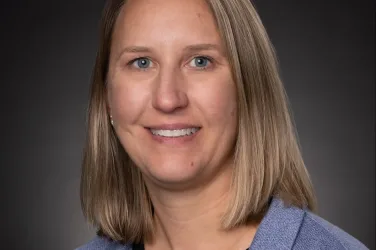
Q&A
Family Dentist
How does dentistry play a role in treating sleep apnea and snoring that many people might not be aware of?
The root cause of sleep apnea often stems from underdeveloped jaws. Modern humans have significantly smaller facial structures than our ancestors, leaving insufficient space for the tongue and teeth. This restricted development creates narrower airways that contribute to breathing disorders. As dentists specializing in sleep medicine, we can utilize teeth as anchors to gradually develop the jaw and expand the airway space. Unlike temporary solutions like CPAP, dental interventions address the structural foundation of the problem, creating lasting anatomical improvements that enhance breathing both day and night.
How early can signs of potential sleep apnea be detected in children, and why is early intervention so important?
Signs of potential sleep apnea can appear as early as at birth. Parents should be alert if their child struggles with difficulty of breast feeding, mouth breathing, ADHD symptoms, bed wetting, difficulty in school, mood swings, crowded teeth, teeth grinding, speech issues, snoring, or heavy breathing—all of which may indicate breathing disorders and poor sleep quality. Early intervention is crucial because we can utilize the child’s natural growth to improve jaw development and breathing patterns. Treating these issues during developmental years is significantly easier, faster, and more effective than addressing the damage after growth is complete. By intervening early, we can guide proper facial development, potentially avoiding more invasive treatments later in life
What recent innovations in dental treatments for sleep apnea, such as laser therapy for soft tissues, are showing the most promise?
Laser treatment for soft palate and tonsil treatment has a great impact on patients who were looking for an alternative to surgery. Spouses are reporting reduction of snoring right away. Also, utilizing head and neck Cone Beam CT makes treatment more promising by allowing us to evaluate the skull precisely for accurate individualized treatment. These advanced imaging techniques help us identify specific anatomical restrictions and plan targeted interventions. Combined with our comprehensive approach to jaw development, these innovations enable us to address both structural and functional aspects of sleep-disordered breathing with greater precision and minimal discomfort for patients.
Could you explain how your collaborative approach with other healthcare professionals provides better outcomes for sleep apnea patients?
The human body acts as one unit. Sleep apnea patients typically have multiple issues— body misalignment, poor tongue posture, chemical imbalances, and mental/emotional distress. By collaborating with specialists like myofunctional therapists, chiropractors, nutritionists, and mental health professionals, we create comprehensive treatment plans addressing all contributing factors. This integrated approach leads to better outcomes because we’re optimizing overall wellness, not just treating isolated symptoms. Listen to Dr. Jung’s TEDxTalk to learn more about this whole-body approach.
About The Expert

Jiyoung Jung, DDS, FAGD
Central Park Dental
Dr. Jung holds a Doctor of Dental Surgery degree with Advanced Education for General Dentistry Program training in rehabilitation, esthetics, implants, and complex surgeries. As a Fellow of the Academy of General Dentistry, she specializes in Sleep & Airway focused dentistry while delivering exceptional care that optimizes both function and aesthetics.











Show Comments